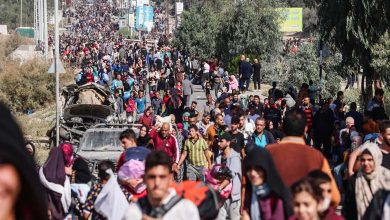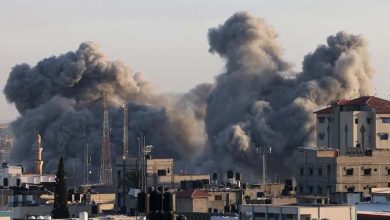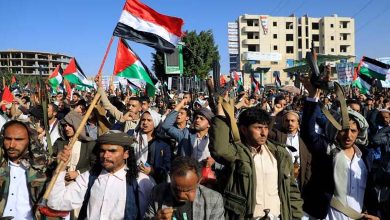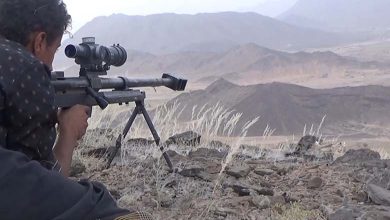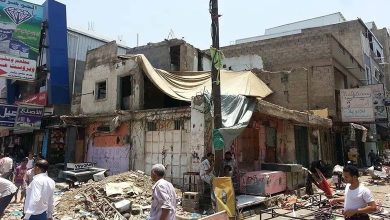Today marks the 162nd day of the Gaza war… Seaport activity, ceasefire proposal, and Rafah “gap”
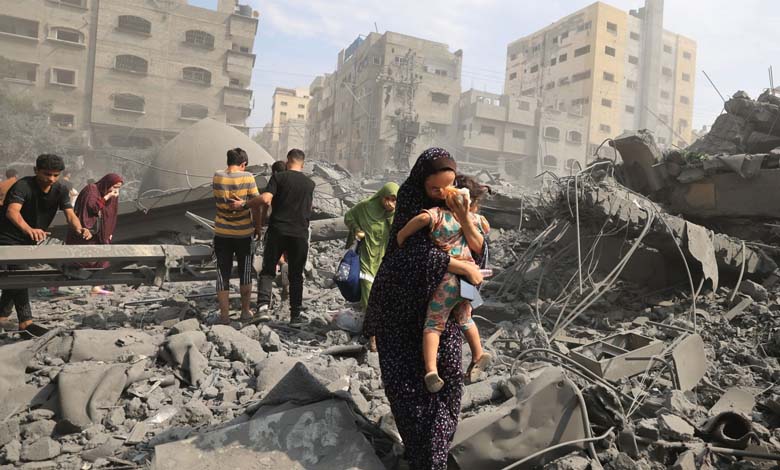
The first aid ship has docked off the coast of Gaza City as Hamas presents a new ceasefire proposal, while Israel insists on lifting the threat of an invasion in Rafah.
With negotiations expected to resume soon regarding hostages and the ceasefire, Israeli Prime Minister Benjamin Netanyahu has approved the army’s “action plans” to attack Rafah, where approximately 1.5 million Palestinians reside, according to the United Nations.
Meanwhile, the first ship carrying food supplies arrived on Friday off the coast of Gaza, where residents are suffering from hunger after more than five months of war.
The United Nations fears widespread famine in the Palestinian territory, especially in its war-ravaged and hard-to-reach northern part.
The “Open Arms” ship, which departed from Cyprus on Tuesday, carried 300,000 meals prepared by the American non-governmental organization “World Central Kitchen.”
The organization’s spokesperson said the World Central Kitchen team in Gaza had built a floating dock, where the goods were unloaded late in the afternoon.
On its part, the Israeli army stated in a release that its forces “were deployed to secure the area,” confirming that “the ship underwent a full security inspection.” It added that the entry of humanitarian aid by sea “does not violate” the blockade imposed by the Israeli state on Gaza since 2007.
-
Tragic Disaster… Witnesses of the Flour Massacre Describe Scenes of Horror, Chaos, and Death in Gaza
Cautionary optimism
Dozens of airstrikes targeted Gaza, focusing mainly on Gaza City, Khan Younis (south), and the central area, according to reports.
With both sides’ intransigence, American, Egyptian, and Qatari mediators failed to secure a ceasefire agreement as hoped for before the start of Ramadan.
However, it appears that Hamas has changed its stance, with one of its leaders telling Agence France-Presse on Friday that the movement is prepared to release 42 Israeli hostages, including women, children, the elderly, and the sick, in exchange for “Israel releasing 20 to 30 Palestinian prisoners for each Israeli detainee.”
The movement demands the release of 30 to 50 Palestinian prisoners for each soldier it holds.
The first phase also includes “military withdrawal from all cities and populated areas of the Gaza Strip and the return of displaced persons without restrictions, as well as the flow of aid of at least 500 trucks per day.”
Meanwhile, US Secretary of State Antony Blinken said that intermediary countries are working “tirelessly to bridge the remaining gaps” in reaching an agreement on hostages and a ceasefire.
The White House expressed “cautious optimism” about the possibility of a ceasefire, stating that “things are moving in the right direction,” noting that Hamas‘s new proposal falls “within the bounds” of what has been discussed by negotiators in recent months.
Rafah “gap”
However, with negotiations expected to resume soon regarding hostages and the ceasefire, the Israeli Prime Minister has approved the army’s “action plans” to attack Rafah, in a “gap” feared to have ramifications on ceasefire negotiations.
Netanyahu’s office stated that “the Israeli army is ready for the operational side and for evacuating the residents,” without providing further details on this operation announced some time ago and opposed by the United Nations and many countries, including the United States.
The White House declared on Friday that it wants to review Israel’s plan for conducting a military operation in Rafah.
The National Security Council spokesperson said, “We have not seen (the plan). We certainly welcome the opportunity to see it,” confirming that the United States will not support any plan lacking “credible” proposals aimed at ensuring the protection of civilians.
Earlier, Blinken, during a visit to Vienna, stated that Washington wants to see a “clear and executable” plan to ensure that civilians “are kept out of harm’s way.”


